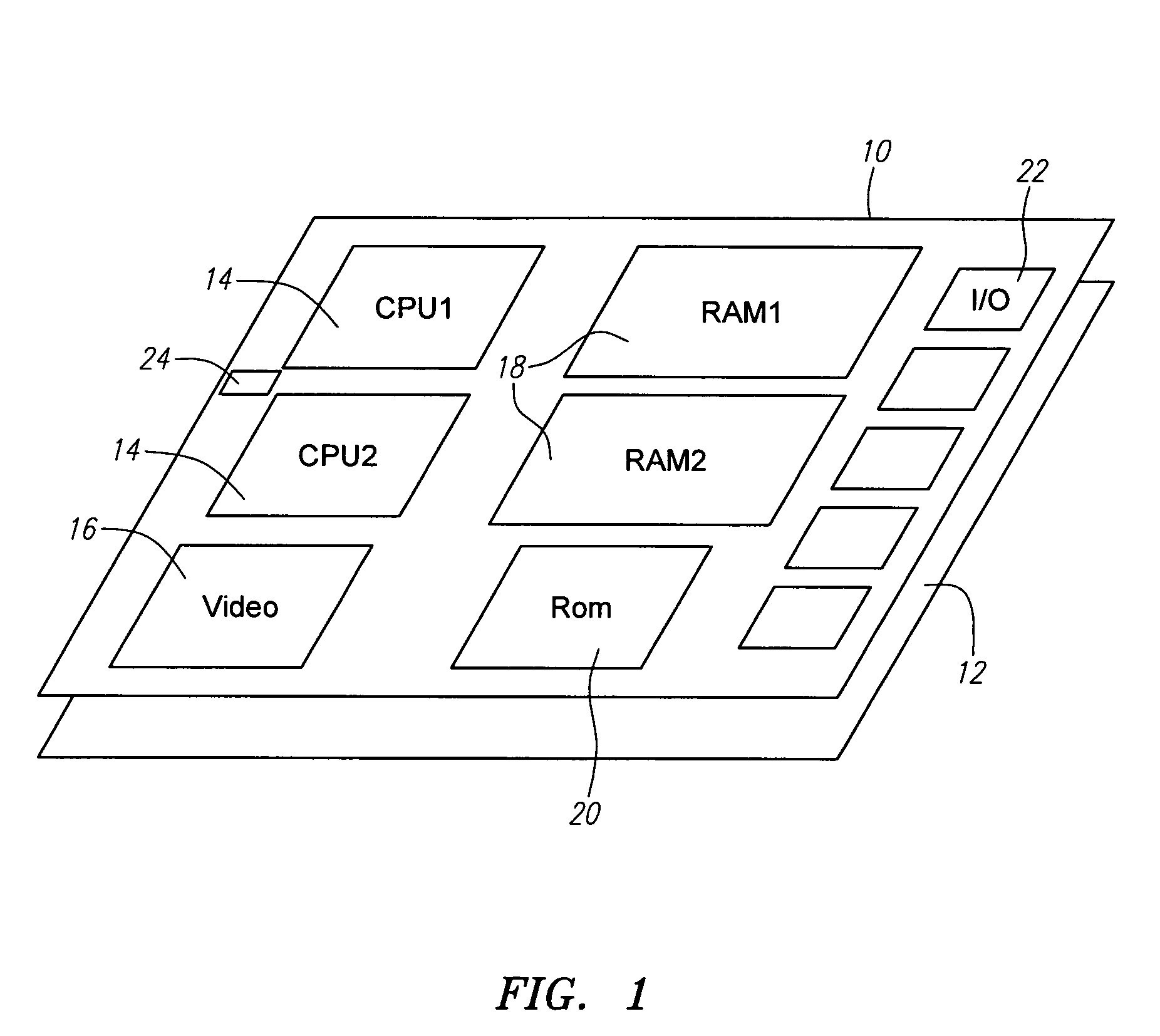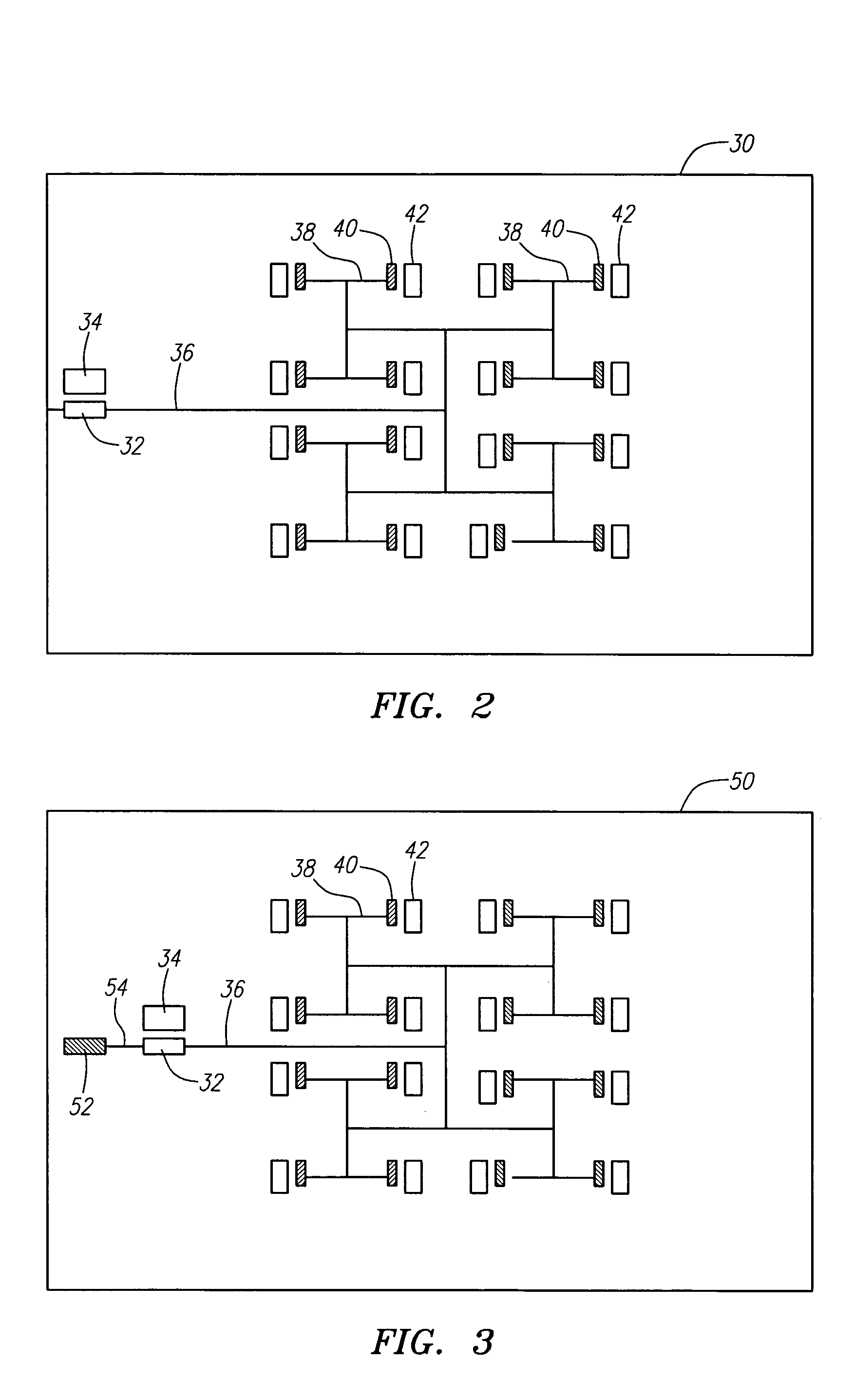Optical interconnect architecture
a technology of optical interconnection and interconnection structure, applied in the field of opticalelectronic systems, can solve the problems of increasing the dielectric constant of insulating material, and increasing the cost of insulating material
- Summary
- Abstract
- Description
- Claims
- Application Information
AI Technical Summary
Problems solved by technology
Method used
Image
Examples
Embodiment Construction
[0009]An aspect of the present invention provides an optical and electronic system, comprising an optical interconnect plane and an electronic plane. The optical interconnect plane includes a plurality of optical channels extending along a plane of the optical interconnect plane. The electronic plane includes first and second electronic circuits. First and second interlayer interconnects respectively couple signals to and from the first and second electronic circuits to the optical interconnect plane. A modulator on the optical interconnect plane receives signals from the first electronic circuit and modulates an optical signal in response to signals from the first electronic circuit and couples the optical signal to one of the optical channels. A receiver on the optical interconnect plane is coupled to the one of the optical channels to receive the optical signal and converts the optical signal into electronic signals coupled to the second electronic circuit on the electronic plane...
PUM
 Login to View More
Login to View More Abstract
Description
Claims
Application Information
 Login to View More
Login to View More - R&D
- Intellectual Property
- Life Sciences
- Materials
- Tech Scout
- Unparalleled Data Quality
- Higher Quality Content
- 60% Fewer Hallucinations
Browse by: Latest US Patents, China's latest patents, Technical Efficacy Thesaurus, Application Domain, Technology Topic, Popular Technical Reports.
© 2025 PatSnap. All rights reserved.Legal|Privacy policy|Modern Slavery Act Transparency Statement|Sitemap|About US| Contact US: help@patsnap.com



